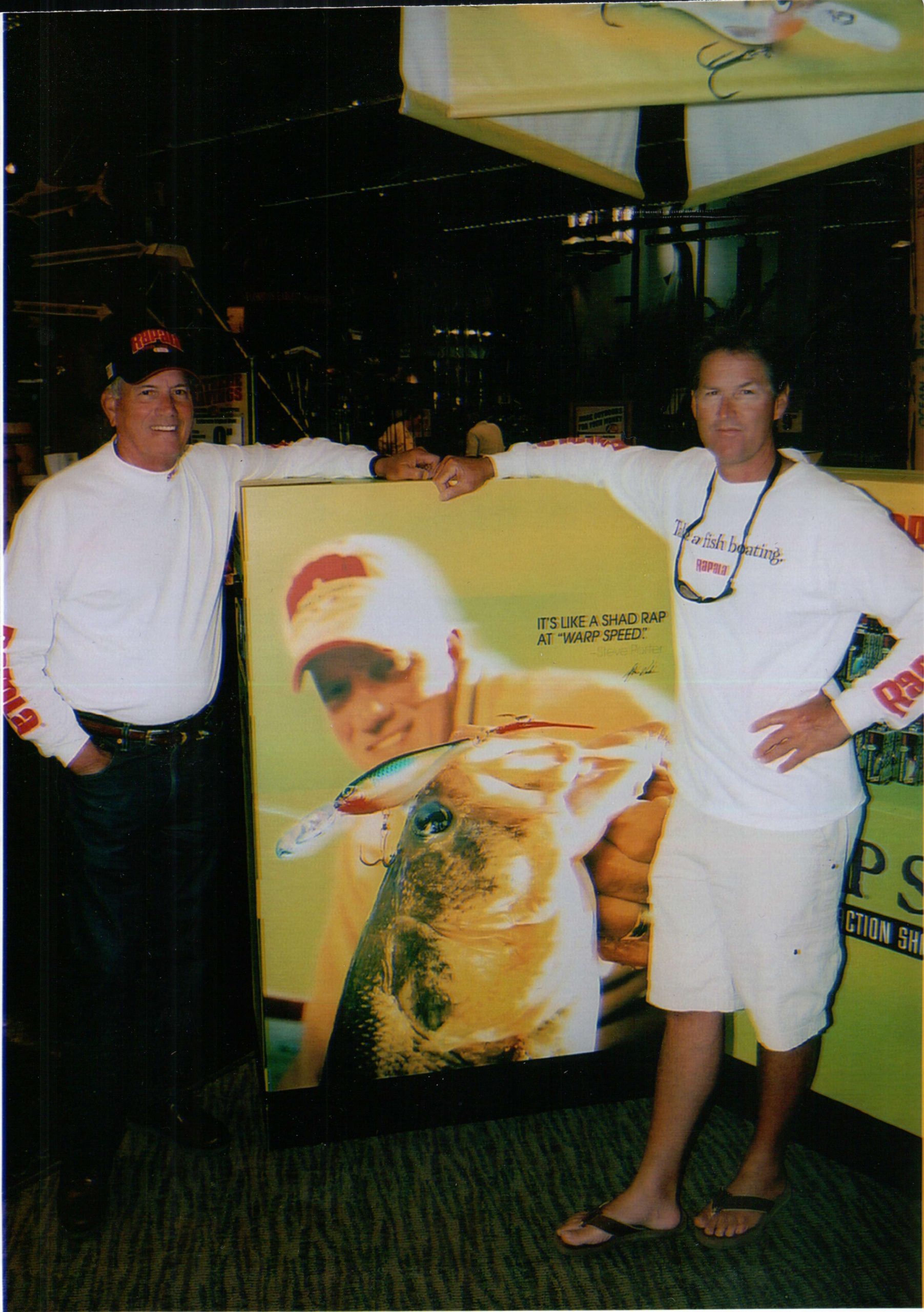
I believe in giving credit where credit is due. That’s why I asked my editor, Ken Duke, to meet with me and my longtime friend, Steve Porter, during the recent Bassmaster Elite Series event on Lake Okeechobee.
Ken was in town covering the event for Bassmaster Magazine and B.A.S.S. Times, so I thought the timing might be right to set the record straight on something that’s been bugging me for years.
Steve’s story is interesting and certainly worth sharing.
I first learned of Steve early in my career while fishing tournaments against him on lakes Okeechobee and Kissimmee. Tall and lean with a deep tan, he drove a sleek 21-foot custom Storm bass boat, all black. That was quite a statement back then, especially in south Florida.
Steve Porter looked like a gunslinger at a knife fight. Nobody was going to mess with this guy, and, man, could he catch fish! Steve was one of those guys you knew you had to beat if you had any thoughts of winning.
It wasn’t until a few years later that I actually met Steve. It happened on Kentucky Lake when I narrowly beat him to win the Gator Division of the Red Man All American Bass Championship.
After the weigh-in, Steve and his wife Mary came over to congratulate me. We’ve been friends ever since.
Don’t Believe Everything You Read
For those of you who have followed the sport, the name Tim Tucker should certainly ring a bell. Serving for years as a senior writer for B.A.S.S. Publications, Tim was one of the best and most prolific outdoor writers of our time. Unfortunately, he passed away a few years ago.
I worked with Tim on many occasions, and much of what I learned about writing came as a direct result of that interaction. But as good as Tim was, there was one time when he got it wrong.
Through no fault of his own, Tim reported a story which credited the wrong guy for developing the “Okeechobee Big-Blade Spinnerbait.” His source gave him bad information, and sadly, the wrong individual accepted full credit for the lure’s introduction. Truth be known, however, his was merely a modification to Steve Porter’s creation.
How do I know this? I’m glad you asked.
I know through my association with the Hildebrandt family. You see, I’ve worked with Hildebrandt for decades, and I’ve heard the story from both ends — Porter’s version and theirs, which corroborate each other (more on this in a minute).
One aspect of Tucker’s story that was accurate is that Hildebrandt blades were the first applied to the earliest big-blade spinnerbaits for bass. But what neither Tucker nor his source knew is that it was actually an Indiana-style blade in the beginning. The willowleaf version came along later.
Necessity — The Mother Of Invention
Back in the early 1970s, Steve was partnered with a man named Ted Adams. Together, they introduced the WeedMaster, a cone-shaped plastic guard that fit over the foot of a trolling motor and was designed to shed weeds. Back then, fishing through vegetation was a major ordeal. Seeing the need, Porter and Adams came up with a simple, yet effective way to spread grass so that a trolling motor could function in thick cover. Until the advent of the weedless prop, this was the only option available.
Business was good, too. Demand became so great they hired a sales rep to sell their product throughout the Southeast. That rep’s name was Charlie Hunter, and he was one of the best in the business. Among his other product lines was Hildebrandt.
During major trade shows, Charlie had all of his key companies set up their booths side by side, so that he could concentrate his efforts with each buyer. It was a smart way of doing business. So for years, the WeedMaster booth was next to Hildebrandt’s, and that’s how Steve Porter was able to make the connection.
Steve never had much tolerance for live-bait fishing. As a result, he became a master of “plug” fishing. He was adept with topwaters, jerkbaits and crankbaits. But he also liked spinnerbaits because they were so effective in and around vegetation. And though he disliked fishing with live bait, he wasn’t ignorant to the fact that big bass love shiners — especially the jumbo-sized native shiners found throughout Florida. The bigger the better.
With this in mind, he began developing prototypes of oversized spinnerbaits, using magnum-sized blades he acquired directly from Alan Hildebrandt.
To get the rest of the story of how the Okeechobee Big-Blade Spinnerbait came to be (and how to fish it), check out Ken Duke’s feature.





